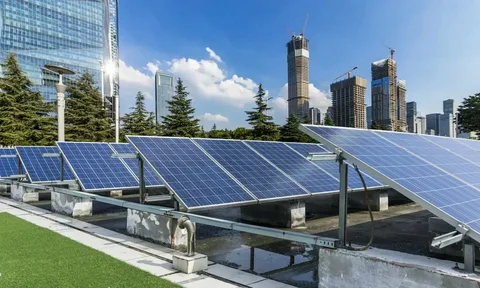As the world accelerates toward sustainable energy solutions, commercial solar systems are taking center stage in the energy revolution. Businesses across various industries are increasingly adopting solar technology to reduce their carbon footprint, cut energy costs, and enhance their sustainability profiles. In this article, we explore The Future of Commercial Solar Systems: Trends to Watch in 2025 and Beyond, highlighting the innovations and market shifts shaping the industry’s next phase.
Growing Adoption of Advanced Solar Technologies
One of the most significant trends in The Future of Commercial Solar Systems: Trends to Watch in 2025 and Beyond is the adoption of advanced solar technologies. Innovations such as bifacial solar panels, which capture sunlight from both sides, and perovskite solar cells, known for their higher efficiency and flexibility, are set to revolutionize commercial installations. These technologies not only boost energy output but also reduce the overall cost per kilowatt-hour, making solar power more competitive with traditional energy sources.
Integration with Energy Storage Solutions
Energy storage is a game-changer in the commercial solar landscape. The future will see an increased emphasis on pairing solar systems with battery storage to provide uninterrupted power supply, manage peak loads, and optimize energy usage. This integration will empower businesses to maximize their return on investment while improving grid resilience. Consequently, in The Future of Commercial Solar Systems: Trends to Watch in 2025 and Beyond, expect to see growing investments in smart energy storage solutions tailored for commercial use.
Digitalization and Smart Solar Management
Digital technologies are transforming how commercial solar systems operate and are maintained. Through IoT-enabled devices and AI-driven analytics, businesses can monitor real-time performance, predict maintenance needs, and optimize energy production. This digital shift is critical to enhancing system reliability and reducing operational costs. As we explore The Future of Commercial Solar Systems: Trends to Watch in 2025 and Beyond, smart solar management will undoubtedly be a focal point for companies seeking efficiency and sustainability.
Policy Support and Financial Incentives
Government policies and financial incentives continue to play a crucial role in driving the adoption of commercial solar systems. In many regions, tax credits, grants, and favorable tariffs are making solar investments more attractive. Looking ahead to 2025 and beyond, evolving regulatory frameworks are expected to support large-scale solar deployments, including commercial rooftops and solar farms. Businesses should stay informed about these developments to capitalize on emerging opportunities.
Sustainability and Corporate Responsibility
Sustainability is more than just a trend—it’s a business imperative. Companies are increasingly held accountable for their environmental impact, and solar power provides a clear pathway to reduce greenhouse gas emissions. The future of commercial solar systems will be deeply intertwined with corporate responsibility initiatives, helping businesses meet sustainability goals and enhance brand reputation. This alignment is a key aspect of The Future of Commercial Solar Systems: Trends to Watch in 2025 and Beyond.
Conclusion
The landscape of commercial solar energy is evolving rapidly, driven by technological innovation, energy storage integration, digital management, supportive policies, and growing sustainability demands. Understanding The Future of Commercial Solar Systems: Trends to Watch in 2025 and Beyond is essential for businesses aiming to stay ahead in the renewable energy transition. By embracing these trends, companies can unlock significant financial, environmental, and operational benefits, paving the way for a cleaner, more resilient energy future.


